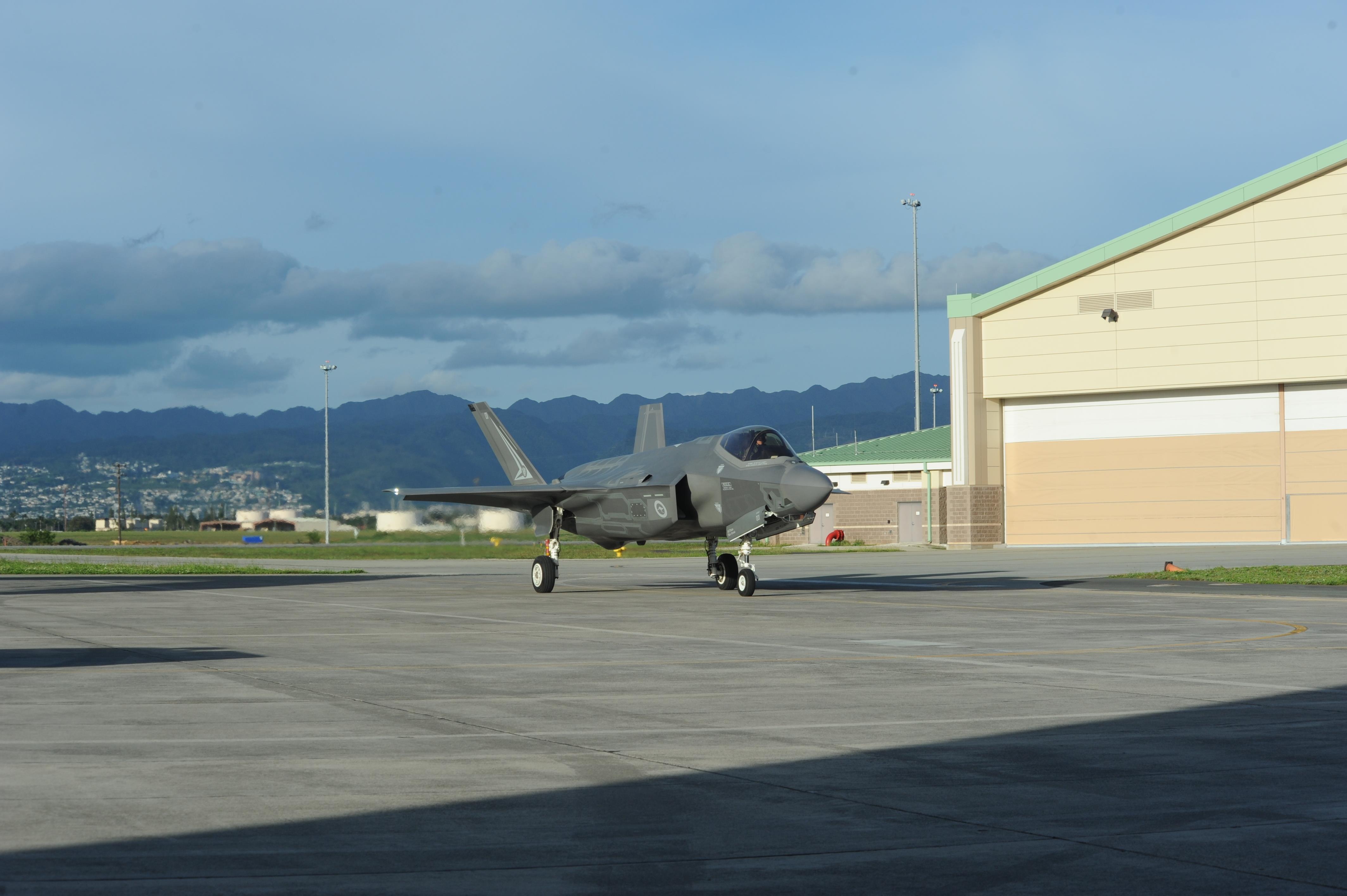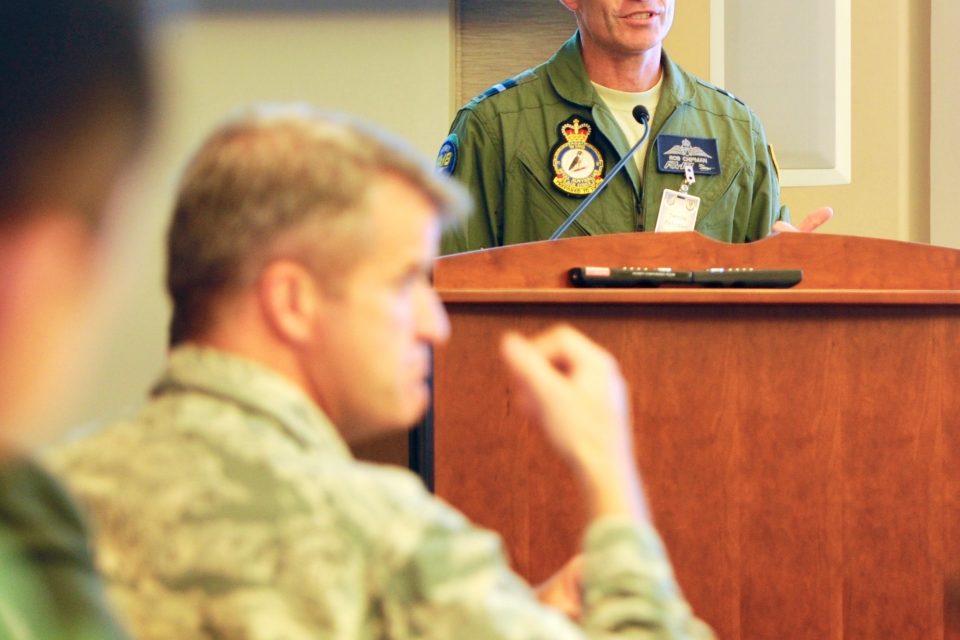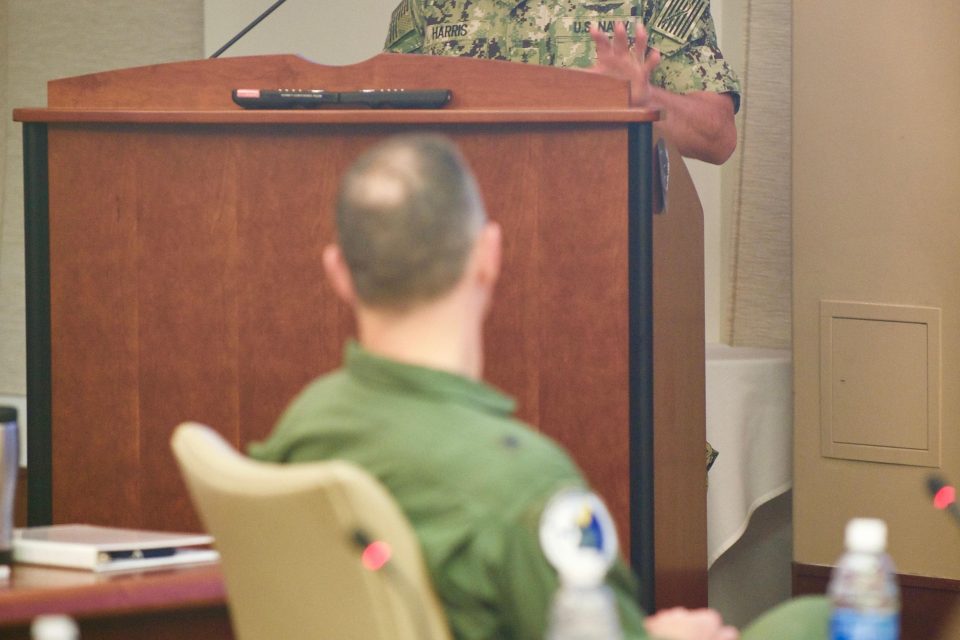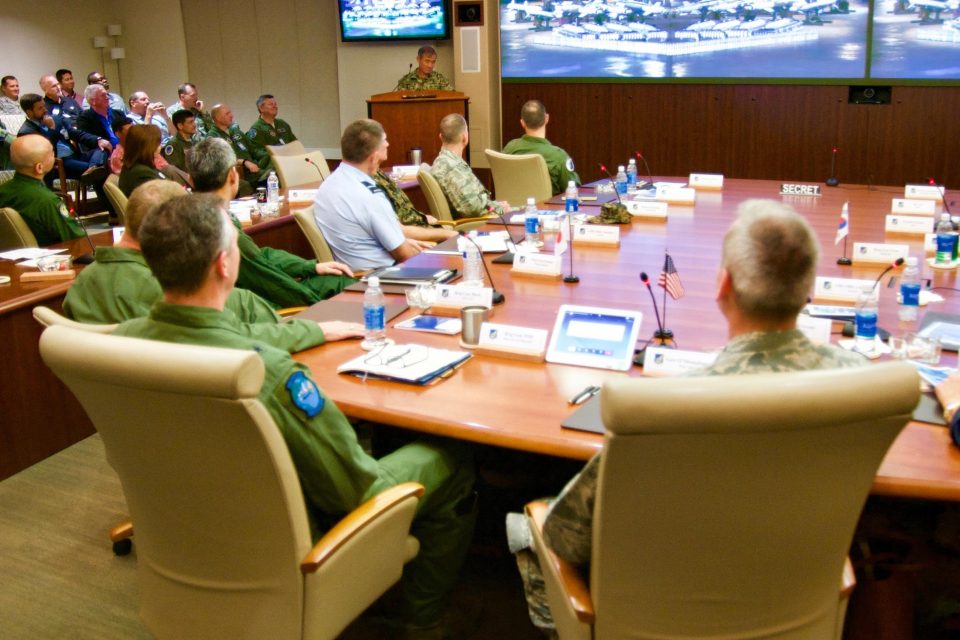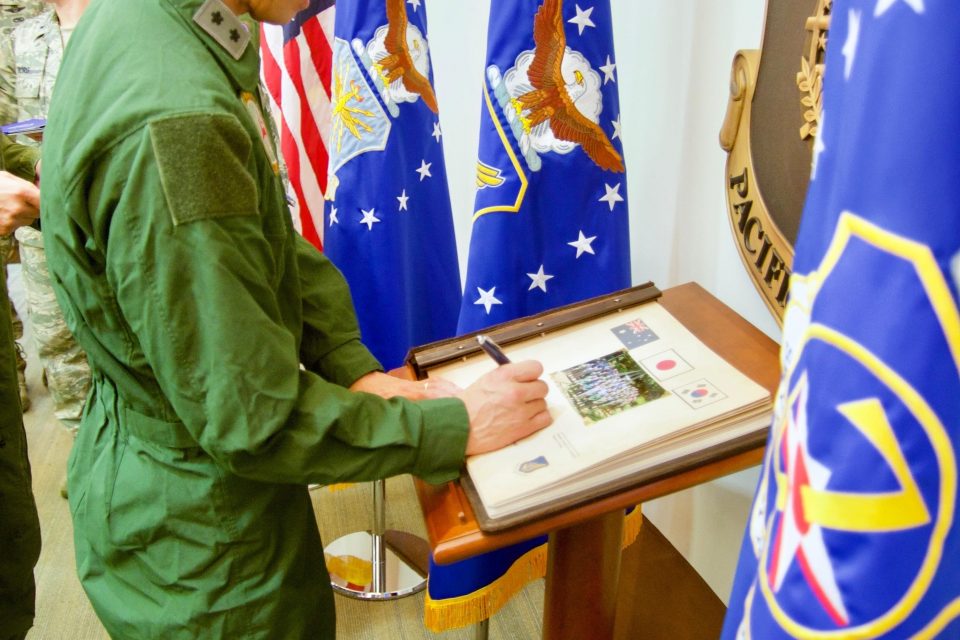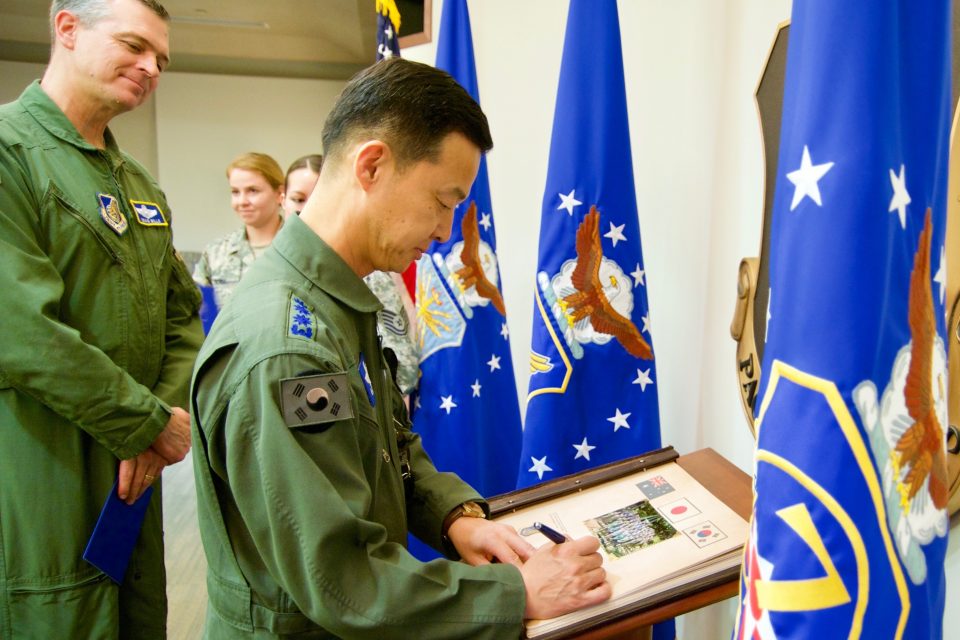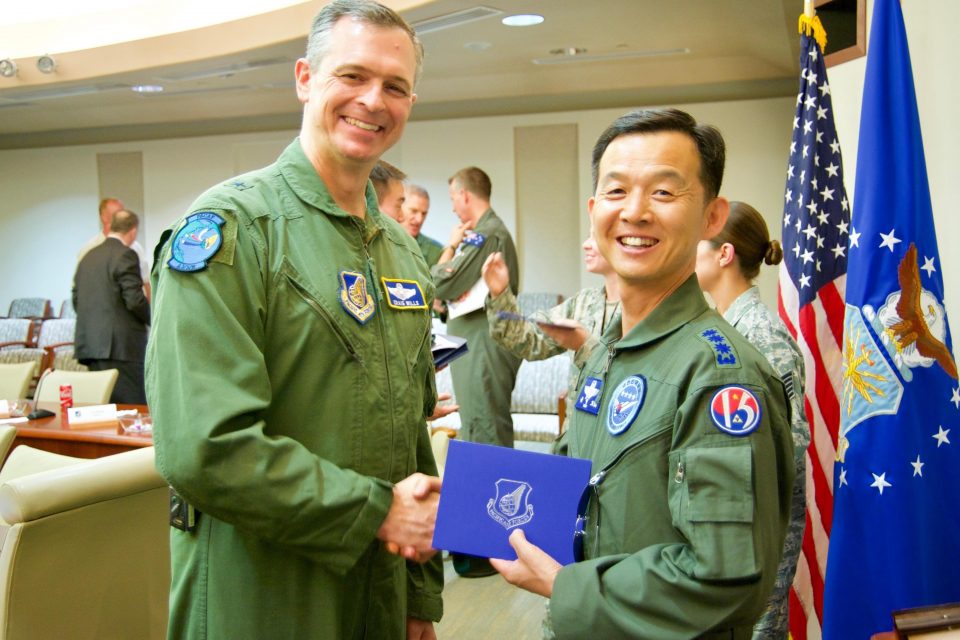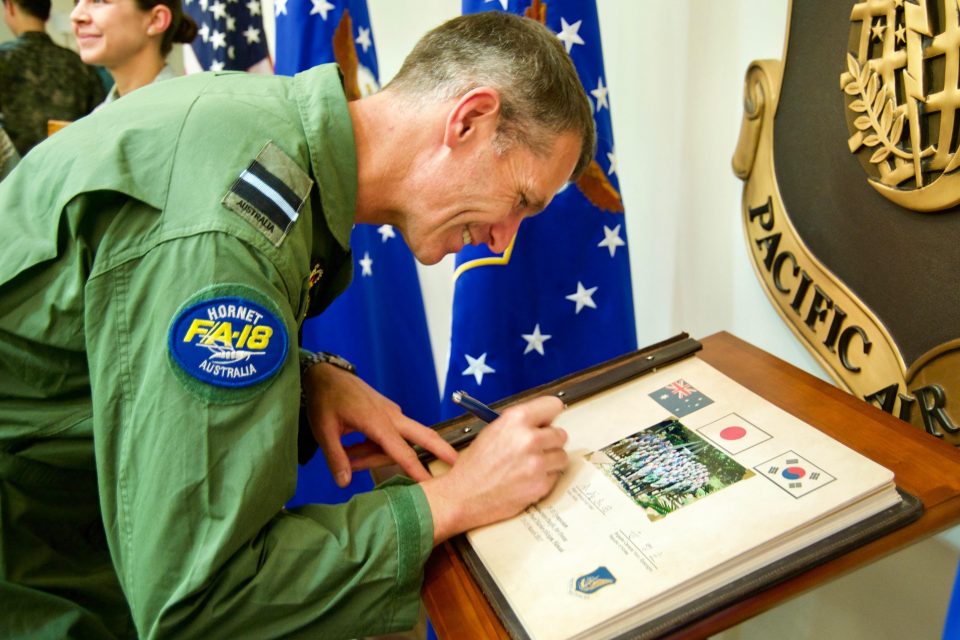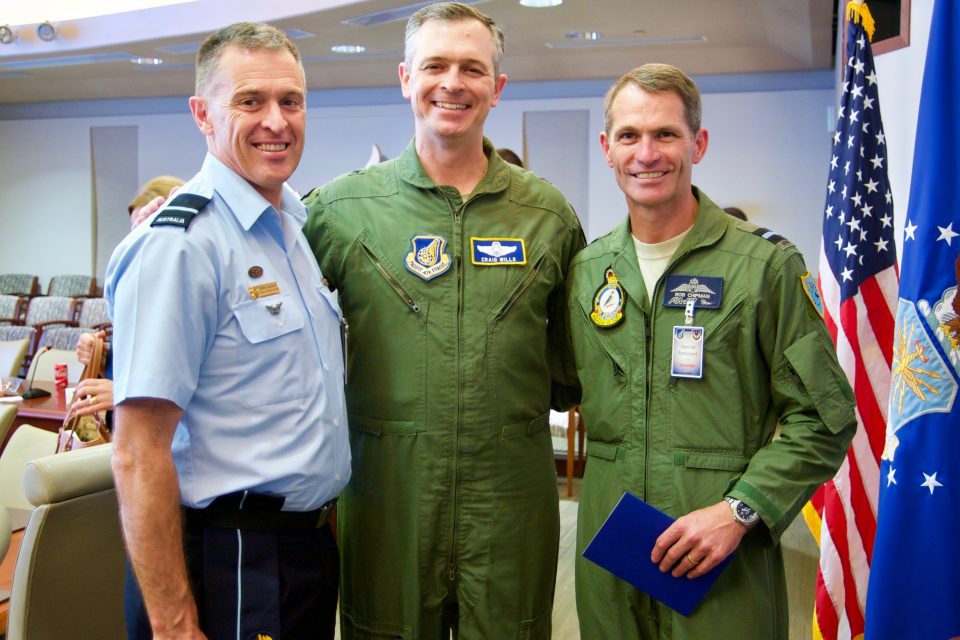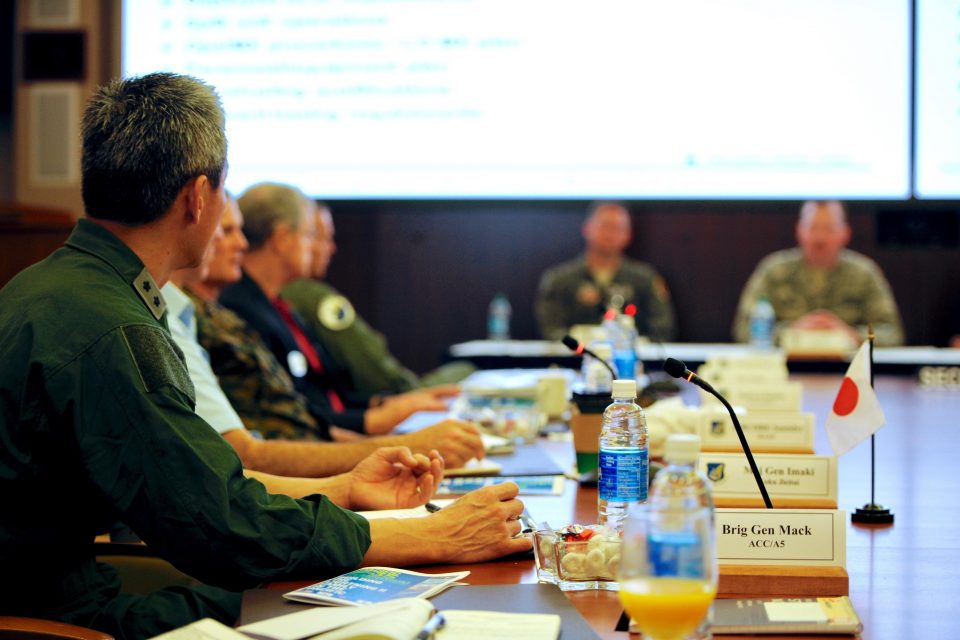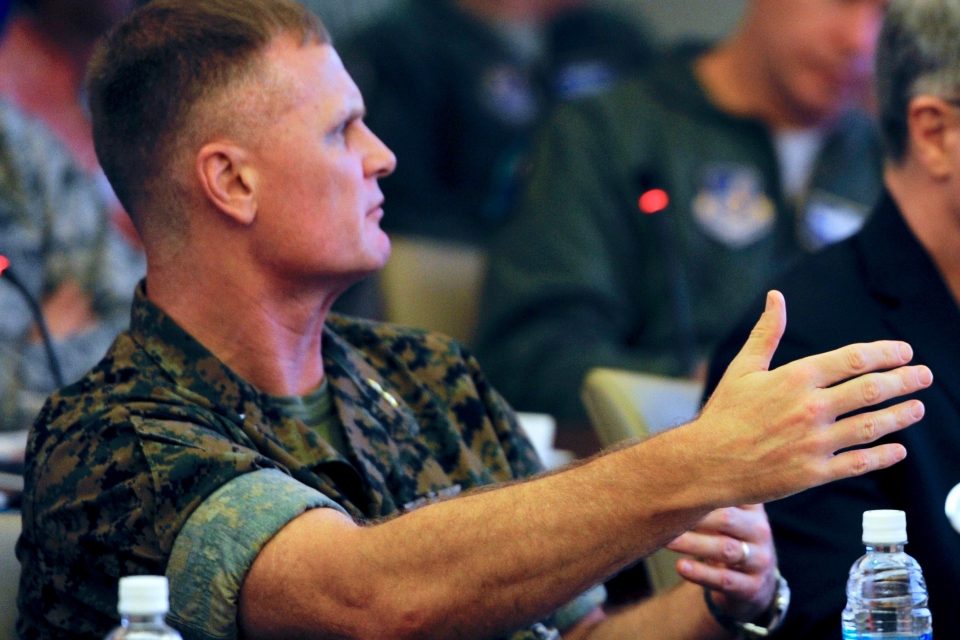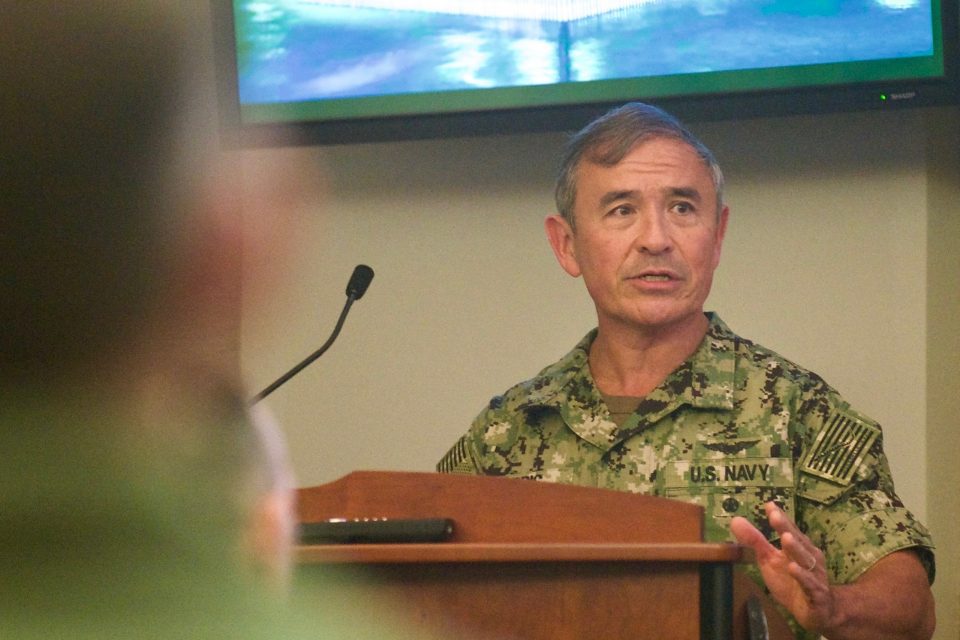2017-03-17 By Robbin Laird
When I interviewed then PACAF Commander, General “Hawk” Carlisle during a visit to Hawaii on my way to Australia, we discussed how the coming of the F-35 would affect US and allied capabilities and approaches.
He hammered home the point that it would open a new phase of shaping US and allied approaches to collective defense.
“The roll out of the sensor-shooter C2 approach for an integrated air and missile defense system also lays down a capability that a decade from now when the fleet of allied and American F-35s is operational will be able to leverage as well.
“By having shaped an approach towards integrated sensor-shooter relationships within which C2 was being worked, the F-35 as a sensor and shooter laid on top of that grid would be an immediate force multiplier.
“General Carlisle was asked what would be the impact of a fleet of F-35s (allied and US) upon a Commander of PACAF a decade out.
It will be significant.
Instead of thinking of an AOC, I can begin to think of an American and allied CAOC (Combined Air Operations Center).
By sharing a common operating picture, we can become more effective tactically and strategically throughout the area of operations.”
And Carlisle added further insights into how he saw the way ahead in an interview I conducted with Ed Timperlake.
“His focus was upon leveraging Air Force and joint assets in ways that would make that force more expeditionary and more effective in providing for cross-domain synergy. He noted that the combination of a large deck carrier with the Air Force with the Amphibious Ready Group and Marine Expeditionary Unit (ARG-MEU) air assets when conjoined within a distributed strike package provides significantly greater capability than when each is considered on its own.
“He sees this reshaping approach as central to shaping the distributed operations approach emerging as the F-35 fleet is deployed over the decade ahead.
“The F-35 is the finest sensor-enabled aircraft ever built. The F-35 is orders of magnitude better than the F-22 (which is the greatest air to air fighter ever built) as an electronic warfare enabled sensor-rich aircraft. We already are working synergy between F-22s and fourth generation aircraft to provide greater fidelity of the information shaping air combat operations. With the F-22 and F-35 combination and the folding in of on-orbit information and surveillance systems, we will be able to generate more synergy across the fleet,” the general told us.
“The other advantage of the F-35 is its commonality across the services. “We are already working on greater synergy among the air power services; with the F-35 and deploying common assets in a dispersed fleet, the efforts we are making now for today’s conditions will only lead to more effective capabilities for tomorrow’s crises as well.”
The Reshaping of Pacific Defense: Interview With PacAF Gen. Hawk Carlisle
Now just two PACAF commanders later, the US Pacific Air Force has held its first F-35 symposium with key allies in the Pacific. And he made it very clear that the F-35 is not a niche capability but a foundational capability to reshaping combat operations in the Pacific.
We have interviewed many of those who have attended and certainly have discussed with key players in every Air Force in the Pacific acquiring F-35s, and the same message has been driven home during those visits — the F-35 is a foundational aircraft for reshaping combat operations.
The opening of the F-35 symposium was described in an article from PACAF published on March 10, 2017.
JOINT BASE PEARL HARBOR-HICKAM, Hawaii (AFNS) — JOINT BASE PEARL HARBOR-HICKAM, Hawaii (AFNS)
The F-35 Lightning II will take center stage during the Pacific Air Forces’ inaugural F-35 Symposium next week. The two-day conference will mark the largest gathering of F-35 experts to include senior officers and warfighters from Japan, Australia, South Korea as well as the U.S. Navy, Marine Corps and Air Force.
Japan, Australia and South Korea are among the 11 countries in the F-35 program and represent the future of fifth-generation aviation in the Indo-Asia-Pacific region. International attendees will participate in a series of open discussions and briefings with the objective of enhancing F-35 operations in the Pacific, sharing fifth-generation lessons learned, and building a foundation for future F-35 bilateral and multilateral engagements. Topics will include bed down, integration, logistics, sustainment and combat operations.
“This symposium marks an exciting new chapter in Pacific combat capability. Together, our joint and international partners have introduced the most capable combat aircraft in the world to the Pacific,” said Brig. Gen. Craig Wills, PACAF’s strategy, plans and programs director.
The F-35 is a next-generation, multi-role fighter that combines advanced stealth with speed, agility and the capability to rapidly fuse information regionally across multiple domains. The Lightning II is the backbone for future combat operations. This symposium will provide an ideal venue to enhance interoperability and cooperation amongst the F-35 community.
U.S. F-35s have reached initial operational capability with Marines and Airmen both flying operational and combat ready aircraft. In addition to the F-35As with the 34th Fighter Squadron at Hill Air Force Base, Utah, 10 F-35Bs from the Marine Fighter Attack Squadron 121, 3rd Marine Aircraft Wing out of Marine Corps Air Station, Yuma, Arizona, are deployed to Marine Corps Air Station Iwakuni, Japan, with six more scheduled to arrive later this year.
Japan started its pilot training program in late 2016, South Korea is scheduled to receive its first aircraft in 2018 and Australia has been training pilots in two Royal Australian Air Force F-35s in Arizona since late 2014.
“Together with our Pacific allies and partners we’re sending a clear message to our neighbors and friends in the region. We will continue to invest in the combat capability required to assure our ability to defend freedom and uphold the rules-based international order,” Wills said.
The Australian F-35 made its first appearance in Australia at the 2017 Australian International Airshow and Aerospace and Defense Exposition at Avalon Airport, Victoria, Australia. While travelling to Victoria, the aircraft stopped at Joint Base Pearl Harbor-Hickam, symbolically emphasizing the importance of the global partnerships and opportunities the F-35 will offer in the coming decades.
And after the conclusion of the symposium, in an article published on March 16, 2017 by Staff Sgt. Kamaile Chan, Pacific Air Forces Public Affairs, the work conducted at the symposium was the focus of attention.
Military senior officers from nations throughout the Indo-Asia-Pacific region gathered March 14 and 15, during the first-ever Pacific Air Forces-hosted F-35 Symposium, to discuss the future of F-35 operations in the Pacific.
“The F-35 is not just a new fighter, it’s a fundamentally different capability,”” said U.S. Air Force Gen. Terrence J. O’Shaughnessy, PACAF commander, during his opening remarks.
“From the technology to the integrated training, it brings an unprecedented combination of lethality, survivability, and adaptability, to the fight.
The F-35 is the backbone of future joint and combined air operations.”
As the Pacific’s 5th Generation Center of Excellence, PACAF will shape all aspects of employment and integration for fifth-generation aircraft in the region, enhancing bilateral relations between Pacific allies.
Subject matter experts from Japan, Australia and the Republic of Korea as well as the U.S. Navy, U.S. Marine Corps and U.S. Air Force participated in open discussions, briefings and expert panels focused on setting the stage for future F-35 operations in the Pacific.
The two day symposium delivered an occasion for the U.S.’s Pacific allies to fuse with experts with the F-35 Joint Program Office, Lockheed Martin and the U.S. Air Force and U.S. Marine Corps to learn more about fifth-generation aviation.
Sharing information and lessons learned was the centerpiece to the event.
Participating nations formed the baseline of future F-35 operations and engagements through discussion on F-35 bed down, integration, logistics, sustainment and combat operations. O’Shaughnessy noted that the symposium would not be a one-off event, but the first in a reoccurring schedule of forums that bring F-35 stakeholders together.
“We have a rare face-to-face opportunity to dive into an extremely sophisticated jet, as a joint and multinational team, to maximize the interoperability of the most lethal weapons system to grace the skies,” added O’Shaughnessy.
“The F-35’s ability to fuse multi-domain information is a game-changing capability that will give us a tactical advantage. It’s because of the F-35’s fusing capability that we must enhance the interoperability among all partners and allies who fly it.”
The F-35 is a next-generation multi-role fighter that combines advanced stealth with speed, agility and a 360-degree view of the battlespace and will form the backbone of air combat superiority for decades to come.
The two-day symposium served as a springboard for F-35’s future in the Pacific by strengthening the forces involved, leading to a better, more fully interoperable joint and coalition team.
“Together with our Pacific allies and partners, we’re sending a clear message to our neighbors and friends in the region,” said Brig. Gen. Craig Wills, PACAF’s Strategy, Plans and Programs director. “We will continue to invest in the combat capability required to assure our ability to defend the security and stability in this region and to uphold the rules-based international order.”
This inaugural Pacific F-35 Symposium featured the largest gathering of fifth-generation warfighters in history. Approximately 91 senior officers and F-35 experts from a variety of organizations participated. Among the organizations represented were U.S. Pacific Command, Air Combat Command, U.S. Air Forces in Europe, Marine Corps Forces Pacific and the Air Force Integration Office.
“The scale of participation we’ve seen with the F-35 Symposium accentuates just how important the F-35 is to us and our allies. The Lightning II is a phenomenal fighter and an incredible investment in our warfighting capability and ability to defend freedom,” Wills said.
U.S. F-35s have reached Initial Operational Capability with Marines and Airmen both flying operational and combat ready aircraft.
In addition to the F-35As with the 34th Fighter Squadron at Hill Air Force Base, Utah, ten F-35Bs from the Marine Fighter Attack Squadron 121, 3rd Marine Aircraft Wing out of Marine Corps Air Station, Yuma, Ariz., are deployed to Marine Corps Air Station Iwakuni, Japan, with six more scheduled to arrive later this year.
Japan started its pilot training program in late 2016, the Republic of Korea is scheduled to receive its first aircraft in 2018 and Australia has been training pilots in two Royal Australian Air Force F-35s in Arizona since late 2014.
In a March 2014 article about the emerging F-35 global enterprise, I looked at how the global fleet was likely to impact collective defense.
Allies are not simply “partners” in the program they are the enablers of 21st century air combat development and approaches.
Allies are not simply “following” the US lead; they are innovating on their own and will infuse the F-35 global enterprise with the spirit of innovation and invention, not mortgaged by the “sequestration” somnolent evident in Washington.
Notably absent from the recent 60 minutes program was a SINGLE comment on this aspect.
Yet is not just about allies buying US kit, it is about something fundamentally more profound: the reset of US and allied airpower.
Leadership is demonstrated; not assumed .
The F-35 as a global enterprise is clearly a foundational force or forcing function force for other developments.
It is not simply a means to an end (modernizing the tactical aircraft fleet) but a forcing function force for fundamental change.
There are several key aspects of the F-35 global enterprise, which are significant for allies as well as Americans.
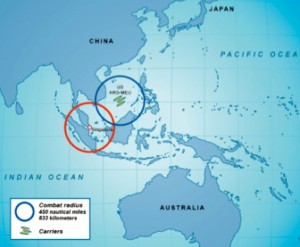
First, it will be in production for a long time, which means that allies can buy with confidence that the system will be there when they need it. There will be no repeat of the Aussie F-111 problem of buying and then the USAF retiring its aircraft leaving the Aussies to foot a significant maintenance bill
The US is up and down in buying numbers of aircraft but with the coming of three production lines (Fort Worth, Cameri, Japan) the allies will be able to buy as the US goes up and down.
Although Lockheed Martin is the prime contractor, the key designers of the combat systems are among the world’s best combat systems companies. As Ed Timperlake has highlighted, the combat systems have their own R and D vectors, which will drive capabilities up over time, which will be reflected in the aircraft.
The weapons, which will be fitted onto the F-35 or operated by the F-35 in a sensor shooter relationship, will be developed globally.
For example, the Kongsberg missile developed for Norway will be available immediately for any F-35A user. The new MBDA Meteor missile is also a case in point of allied investments also shaping a global market
This is historically unprecedented and allows global partners to build for themselves and for the global consortium.
For example, a country like Australia with unique ranges and key scientific capability (demonstrated in the hypersonics area) can become a major designer and producer of missiles for the F-35.
And as one Aussie engineer commented: “Clearly we see the opportunity inherent on adding longer range capabilities for strike associated with the F-35. And one needs to realize that the technology barriers that have hampered the development of a scramjet powered vehicle operating in the low hypersonic region have been broken.”
As a software upgradeable aircraft, users reflecting collaborative combat experience will do the code rewrite. This is already happening with the Wedgetail in Australia, which is a launch point for the use of new software upgradeable aircraft.
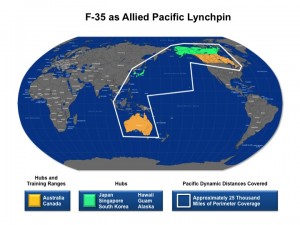
The program has built in a global sustainment capability from the ground up, which allows for the clear possibility of shaping a very different approach to global sustainment. Programs developed first for the US which then add global customers face a significant parts and support problem because there was never a thought of building in a global sustainment approach.
The Italians have already built a regional sustainment center in Italy for Europe and Med operations.
The manufacturing program is already mature and there will three FACOS: two already exist in the US and Italy and a third to be added in Japan.
And operationally, a global fleet will provide significant opportunities for innovation by the US and its partners in building out a new combat approach around distributed operations.
And the usual comparisons of stealth China and Russian aircraft versus the F-35 ignore three crucial points:
The US and several allies are investing in the program and will use the program. As a result, it is unlikely that Russia or China will win the fifth generation investment race.
The USAF has several decades of experience with stealth, which neither the Russians nor Chinese have.
The con-ops of F-35 facilities an aerospace combat cloud and distributed operations; neither is a strong suit for authoritarian controlled air combat forces such as those of the Russians and Chinese.
In short, the reality is the reality
The opportunities are there for the new generation of I-Pad generation pilots and the 21st century air combat innovators.
The “Right Stuff” is back.
But of course you actually have to talk to the new generation of pilots, maintainers, and manufacturers of the 21st century air combat force to feel the enthusiasm and see the rethinking going on daily.
It takes time, but the enthusiasm from the new generation is palpable.
And I would add that I am writing this piece from Canberra, Australia where this week The Williams Foundation is hosting a conference on the 5th generation opportunity.
I maybe physically down under but these folks are certainly not when it comes to sorting out the future.
The slideshow above highlights participants at the Symposium, underscoring the point that key US allies are key plank holders in the F-35 global enterprise, and credibility with Allies will require the US to get on with the fifth generation airpower transition, distributed lethality and building kill webs for a defense in depth strategy in the Pacific. The photos are credited to the USAF.
Editor’s Note: The Aussies continue their innovative and cutting edge look at the broader evolution of fifth generation warfare and the challenge of shaping an integrated combat force in their latest Williams Foundation Seminar on April 11, 2017.
As wrote in an article published March 15, 2017 and announcing the latest Williams Foundation Seminar:
The US Navy leadership has articulated what they see as a key way ahead to build a 21st century integrated force and have introduced the concepts of kill web and distributed lethality to get at the concept.
The key is to buy the right platforms, and to build an integrated force from the ground up and as you do so you work integration backwards as well to leverage legacy assets, which are capable of making the transition.
The challenge is how to acquire, build, buy and develop such a force going forward?
This is no easy task because the core focus of the legacy mindset is about buying a platform and then figuring out how to integrate that platform with the force.
With the acquisition of the P-8, Triton and F-35 the US Navy has been leaning forward to shape thinking and a way ahead to work towards a more integrated force going forward, although the notion that buying more Super Hornets at the expense of the F-35 makes little sense from this standpoint.
If the USN wants a 21st century integrated force going forward, the F-35 is a key foundational element to get that capability; the Super Hornet is headed towards a future of being a bomb truck for the F-35.
The Aussies have grasped this point from the outset of their planned acquisition of the F-35 and have looked from the outset beyond the buying of a new platform to the shaping of a new force.
The F-35 is key driver of change for the Aussies but it is not an in and of itself capability.
The Williams Foundation has been a thought leader in bringing together the key players in the Australian military as well as allies to shape a way ahead for the integrated force.
Now the Foundation is hosting a conference on April 11, 2017 in Canberra which will explicitly address the key challenge of how to develop such an integrated force with a key case study being the way ahead to build an integrated missile defense capability built into the force.
According to the Williams Foundation:
Since March 2014, the Williams Foundation has conducted a series of Seminars that explored the opportunities and challenges afforded by the introduction of next generation combat capabilities.
Topics that have been explored to date included:
- Air Combat Operations – 2025 and Beyond
• Battlespace Awareness – The Joint Edge
• Integrating Innovative Airpower (held in Copenhagen)
• Training for an Integrated ADF: Live, Virtual and Constructive
• Design-Led Innovation
• New Thinking on Air-Land
• New Thinking on Air-Sea
The Next Step – The Integrated Force Seminar
The hypotheses the seminar will explore are:
We must operate as an integrated team from the design, through delivery to the operation of the force; failure to act as such will incur unacceptable risk in future operations.
If we don’t “design” the integrated force we are committed to “after-market” integration.
We can’t build and operate an integrated force using business models developed for acquiring stand-alone, stove-piped capabilities.
“Design” is about more than just platforms and systems … it is about how we design, acquire, operate and sustain an integrated force in a more complex interconnected global context.
If we over-complicate the “design” process we will stall our efforts and get the same results we have had over the past 20 years; i.e. stove-piped capabilities.
We must recognise that the task load of the three Services in their raise, train, sustain and Capablity Manager roles means that simply delivering a large volume of Force Design guidance to the three Services at once will not work; we must be cogniscant of the realites of the Service’s exisiting tasks and loadings when seeking to transform to an integrated force model.
In preparation for the Seminar, the Williams Foundation has run a six month IAMD Study, exploring the challenges of the IAMD program and the concept of integrated force design, as one example of the forty programs that the Department of Defence has embarked upon. The IAMD Study Report will be launched at the seminar.
Seminar Program
The Seminar will be run at the National Gallery of Australia on 11 April 2017. The program will include coordinated presentations from the three Services and VCDF Group.
They will all be addressing the challenges and opportunities of integrated force design.
In an afternoon session, a series of presentations and a panel discussion comprising Defence Industry and CASG will explore how the integrated force will be acquired and sustained given the predominance of business models developed for acquiring stand-alone, stove-piped capabilities.
Second Line of Defense will be attending the Seminar and will report on the debates, discussions and the thinking about the way ahead.
http://www.williamsfoundation.org.au/event-2489982


